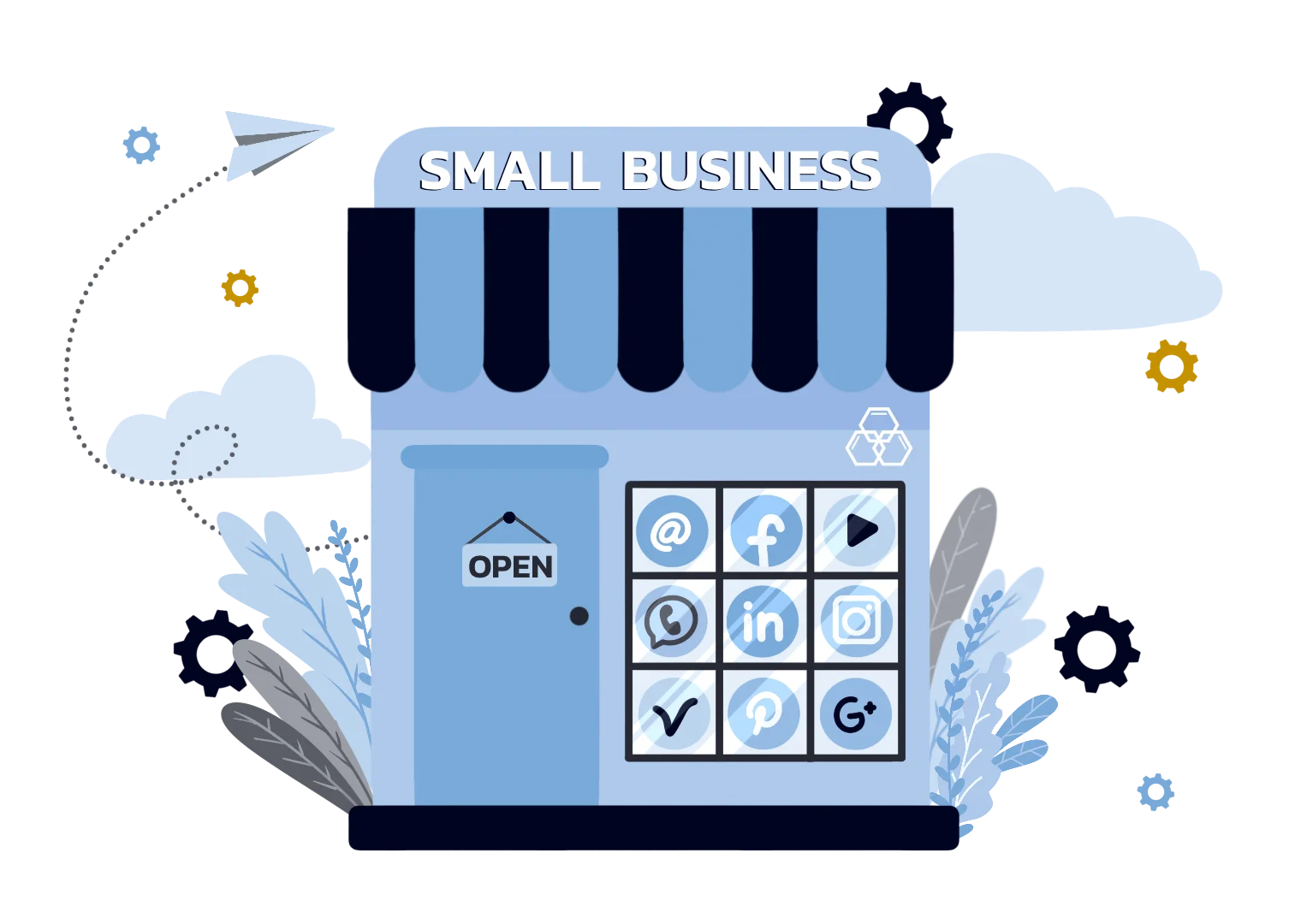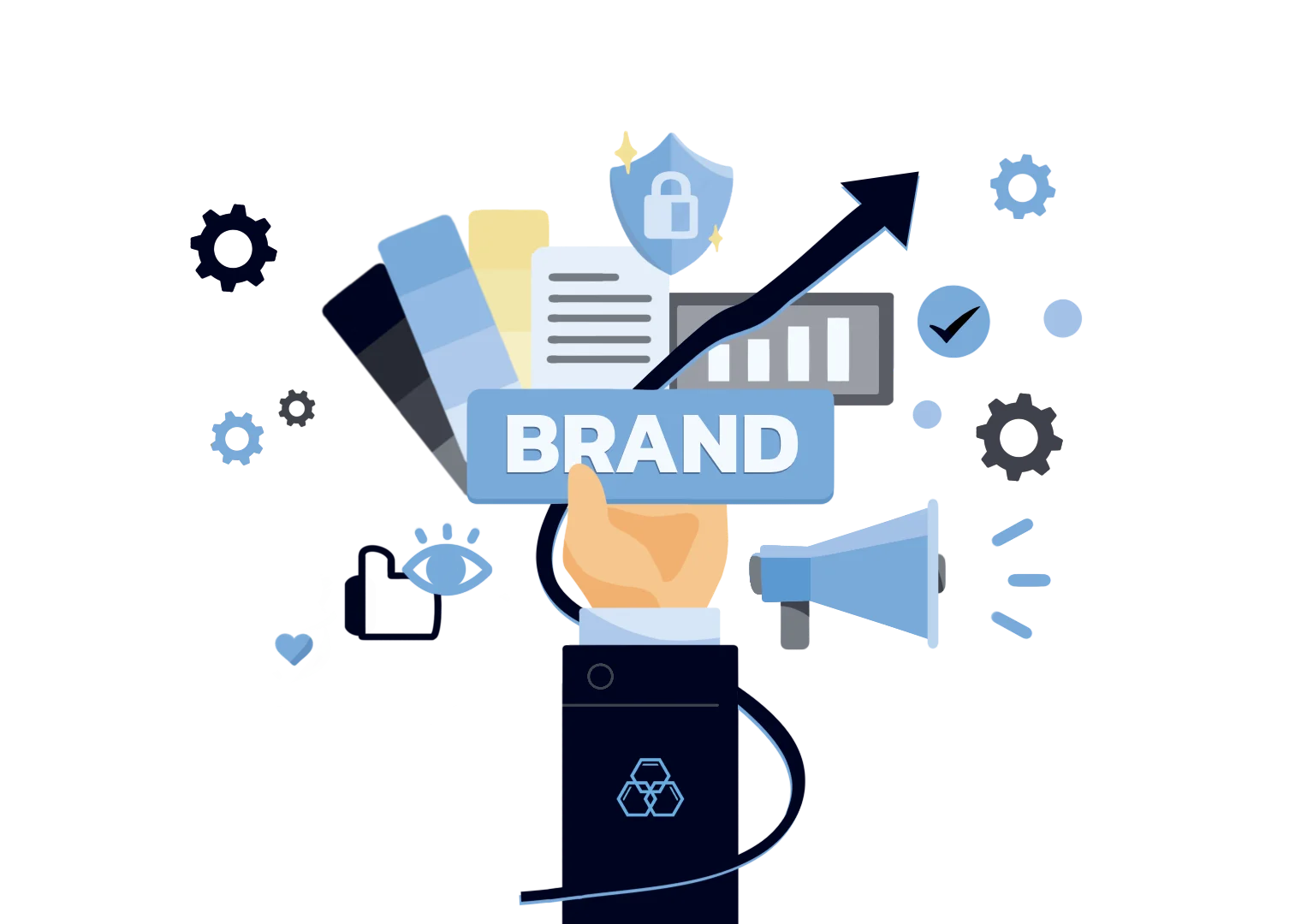What is Brand Collateral? All You Need to Know
A strong brand identity is more important than ever. Your brand's values, personality, and mission must consistently be reflected in every material in your product or service.
We'll explore the different types of brand collateral, discuss their importance, and provide valuable tips on creating a cohesive and impactful brand experience across all channels.
Let's get started.
What is Brand Collateral?
The marketing or brand collateral refers to the entire collection of physical and digital assets representing and promoting your brand identity. Brand collateral is the tangible aspect of the company's brand strategy, and these elements serve as tangible outcroppings of your brand, leaving a lasting impression on potential customers and fostering brand recognition.

For example, for a personal brand, the brand collateral is like its wardrobe, business card, and even online presence—all working together to create a consistent and memorable personality.
Here are some examples of brand collaterals:
- Print materials: Business cards, brochures, flyers, posters, packaging
- Digital assets: Website design, social media graphics, email templates, presentations, e-books
- Branded merchandise: T-shirts, mugs, pens, notebooks
Why is Brand Collateral Important?
Brand collateral mostly serves as a strategic tool to be seen and remembered. Here's a deeper dive into how exceptional brand collateral benefits your business:
Builds Brand Awareness and Recognition

Every brand collateral acts as a mini-billboard, from a captivating website design to a well-designed business card. The more consistent visuals appear across various platforms (print, digital, etc.), the more familiar your brand becomes to your target audience.
This repetition strengthens brand recall, making your brand the first to come to mind when a potential customer needs what you offer.
Strengthens Brand Identity

Brand collateral communicates your brand's core values, personality, and mission without ever saying a word. Consistently using design elements like colors, fonts, and imagery, it paints a picture of your brand.
This consistency builds trust because it shows you're a reliable and established entity. It also fosters a stronger connection with your prospective customers by resonating with their values and aspirations.
Creates a Positive First Impression

First impressions are important, and brand collateral is often the initial handshake with potential customers. For example, a clean, professional design with clear messaging creates a positive first impression, projecting professionalism and establishing credibility.
This positive impact can distinguish a customer from someone exploring further or clicking away.
Boosts Brand Credibility and Trust

A well-developed and implemented brand collateral strategy demonstrates attention to detail and professionalism. This consistency across all touchpoints, from a polished presentation to a high-quality brochure, builds trust with potential customers.
They see your effort in your brand presentation, making them more receptive to your message and offerings.
Drives Sales and Lead Generation

Effective brand collateral is a powerful sales tool. Compelling brochures can showcase your products' features and benefits. Engaging social media, graphics can grab attention and drive traffic to your website.
For example, informative e-books can educate potential and existing customers about your expertise, establishing you as a thought leader. Strategically using brand collateral to educate and inform can nurture leads and drive sales and lead generation.
Supports Brand Advocacy

When customers connect with your brand on a deeper level, they're more likely to become brand advocates. Memorable and visually appealing brand collateral can play a significant role to nurture customer relationships.
Imagine a customer receiving a beautifully designed tote bag with your logo. They'll likely use it frequently, giving your brand free advertising and potentially sparking conversations with others. In this way, brand collateral can inspire customers to share their positive experiences, expanding your reach organically and turning them into vocal advocates for your brand.
What does Brand Collateral Mean in Marketing?
Think of your marketing strategy as the blueprint for your brand's success. It outlines your target audience, unique selling proposition, and the message you want to convey. Brand collateral is the toolbox filled with the creative assets you'll use to construct that vision.
Here's how brand collateral aligns with your marketing strategy:
Brand Consistency
A well-defined marketing strategy establishes brand guidelines, including colors, fonts, imagery, and messaging tone. Brand collateral ensures consistent application of these guidelines across all marketing materials – from website design to social media graphics.
This consistency reinforces brand recognition and builds trust with your target audience.
Targeted Communication
Your marketing strategy segments your audience and tailors messaging to resonate with their needs and interests. Brand collateral can be adapted to reflect these audience segments.
For example, a brochure targeting young professionals might have a different design aesthetic and messaging approach than one geared toward retirees.
Marketing Goals
Your marketing strategy aims to achieve specific goals, such as increased brand awareness, lead generation, or sales growth. Brand collateral plays a crucial role in driving these goals.
For example, compelling brochures and social media graphics can raise brand awareness. Engaging e-books and white papers can nurture leads. Clear and informative product packaging can influence purchasing decisions.
Brand Collateral Examples
Let's delve into the different categories and specific examples of brand collateral;
1. Print Materials
These tangible touchpoints create a physical connection with your brand. Here are some familiar print materials;
- Business cards
- Letterheads
- Envelopes
- Brochures
- Flyers
- Posters
- Packaging
Examples: A business card with a clean layout and high-quality printing creates a professional first impression. A product brochure featuring captivating visuals and informative text educates potential customers.
2. Digital Assets
These online elements establish your brand presence in the digital space. Some known digital assets include;
- Website design
- Social media graphics (posts, banners, covers)
- Email templates
- Presentations
- E-books
- Infographics
3. Branded Merchandise
These physical items promote brand awareness and can be used as giveaways or promotional tools. Here are some examples;
- T-shirts
- Mugs
- Pens
- Notebooks
- Tote bags
- Hats
4. Other Creative Assets
Here are some additional creative assets that can further enhance your brand storytelling;
- Brand videos
- Explainer videos
- Product demos
- Podcasts
- Custom fonts
- `Brand mascots
What Makes Good Brand Collateral?
What separates good brand collateral from the forgettable kind? Here are key factors that make your collateral truly shine:
Visual Cohesiveness
Visual cohesiveness ensures all your brand collateral utilizes the same design elements, creating a unified brand experience. Here's how to achieve it:
- Color Palette: Consistent use of a defined color palette across all materials, from website banners to business cards, creates a sense of unity and reinforces brand recognition. Think of how Tiffany & Co. owns robin egg blue and how it instantly brings their brand to mind. Develop a color palette that reflects your brand personality – energetic and vibrant colors for a youthful brand, calming and sophisticated tones for a luxury brand.
- Fonts: Using limited fonts throughout your collateral establishes a consistent brand voice. For example, a playful script font might suit a children's clothing brand, while a clean sans-serif font might fit a financial services company more. Choose fonts that are easy to read and complement your overall design aesthetic.
- Imagery: A well-defined brand image library ensures all visuals used in your collateral, from stock photos to custom illustrations, align with your brand aesthetic. Think about the emotions you want to evoke with your imagery. Do you want sleek product photography for a tech brand or warm lifestyle photos for a travel agency?
High-Quality Design and Production
Invest in high-quality design and production across all your collateral to leave a lasting positive impression.
- Print Materials: If the finances allow, use high-quality paper stock for business cards and other printed materials. Moreover, ensure clear and crisp graphics with professional design in digital brochures, printed and digital newsletters, brand website and blog content.
- Digital Assets: Invest in a user-friendly, responsive website design that is compatible with different devices (desktop, mobile, tablet). Utilize high-resolution images and videos for a polished look. Your digital marketing collateral must prioritize smooth navigation and a seamless user experience—a clunky website frustrates visitors and drives them away.
Clear and Compelling Messaging
Your brand collateral should tell a clear story, not just showcase your logo. Here's how to make your message resonate:
- Target Audience: Tailor your content marketing strategy that focuses on resonating with your specific target audience. For example, a brochure for young professionals might use a more casual tone and focus on product features. In contrast, one aimed at senior citizens might use simpler language and highlight the benefits of your services.
- Brand Voice: Maintain a consistent brand voice throughout your collateral, reflecting your value proposition and brand personality. Ask yourself: Is the brand playful and informative? Serious and authoritative? Ensure your voice shines through in your messaging consistently—it helps build brand recognition and trust.
Focus on Benefits
List your product features and focus on your product or service's benefits to the customer. How will your product make their life easier or better?
- Call to Action: Don't just tell your audience about your brand; tell them what you want them to do next. A strong call to action (CTA) on your collateral can drive conversions and engagement. Make it clear, specific, and easy to follow.
- Print Materials: A brochure might have a CTA to visit your website for more information or contact you for a free consultation. Use strong action verbs like "Learn More," "Shop Now," or "Get Started."
- Digital Assets: A social media post might have a CTA to "Click the Link in Bio" or "Swipe Up to Shop." Experiment with different CTA formats (buttons, text links, etc.) and track what resonates best with your audience.
The Power of Brand Collateral
Remember, effective brand collateral is about crafting a narrative that resonates with your target audience and compels them to take action. Make sure that you develop a winning branding strategy, unleash your creativity, and be consistent in your marketing efforts, to make your unforgettable.
Let us know how Evolv can help you empower your brand collateral!
Also, check out our blog page and be updated with the latest insights on brand building.







